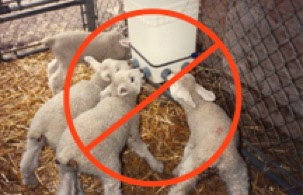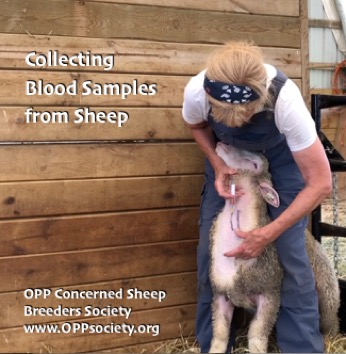About Ovine Progressive Pneumonia
“In my mind, living with a chronic disease (OPP) is like living with a time bomb. One year of bad luck — drought, flooding, moldy hay, enforced confinement, fill in the blanks — you will start losing good middle-aged ewes from what appears to be bacterial pneumonia, or they won’t be able to raise their lambs or they can’t bounce back after weaning, etc.”
MARIE S BULGIN, DVM, MBA, DACVM
PROFESSOR EMERITA, UNIV OF IDAHO
PRODUCER
NO MORE ORPHANING!
— AND OTHER FAST FACTS —

General
Ovine progressive pneumonia is caused by a lentivirus, OPPv, resulting in life-long persistent viral infection. It can result in mastitis, respiratory distress, swollen joints, and/or “thin-ewe syndrome” in mostly older (>2 years) infected sheep.
Prevalence
A 2001 study found that 36% of the flocks in the U.S. were infected with the OPP virus. Incidence of infection increases with ewe/ram age due to sheep-to-sheep transmission. In some flocks the prevalence can approach 100%.
Susceptible Breeds
Any breed of sheep can become infected with the OPP virus. Breed-specific genetic susceptibility studies are ongoing, but differences in viral strains as well as flock management practices also need to be taken into account.
Primary Transmission
Only about 10 to 30% of transmission is from infected dams to lambs. Most occurs when young replacement ewes join the infected breeding flock. Therefore, contrary to earlier thought, it’s possible to raise test-negative lambs from infected test-positive ewes.
Other Transmission Routes
Besides milk and colostrum from an infected ewe, which does not always pass on OPPv, transmission can occur via respiratory secretions (coughs) and multiple use of needles and taggers. The virus does not survive long in the environment.
Clinical Signs
Symptoms are observed primarily in mature sheep: progressive weight loss while maintaining a normal appetite, uniformly hard udder with little milk, exercise intolerance when forced to move. Some infected animals exhibit no signs.
Diagnosis
A diagnosis of infection is usually made by identifying antibodies in the blood. However, the presence of antibody does not convey immunity. We have found the Elitest® ELISA crucial to success of the new eradication strategy described on our ‘Library’ page.
Treatment
There is no effective treatment or vaccine for OPP. Once a ewe begins to exhibit clinical symptoms it’s unwise to breed her for “just one more lambing” as the outcome is likely to be unsatisfactory on many levels.
Control or Eradicate?
Concentration should be on eradicating, not controlling, the virus or you will be right back where you started in a few years. We now know that eradication can be accomplished without orphan rearing or premature culling of test-positive ewes.
Eradication Guidelines
There are varied routes to an OPP-test-negative flock, no one-size-fits-all. See our ‘Library’ page for more information, including step-by-step testing protocol and management guidelines.
